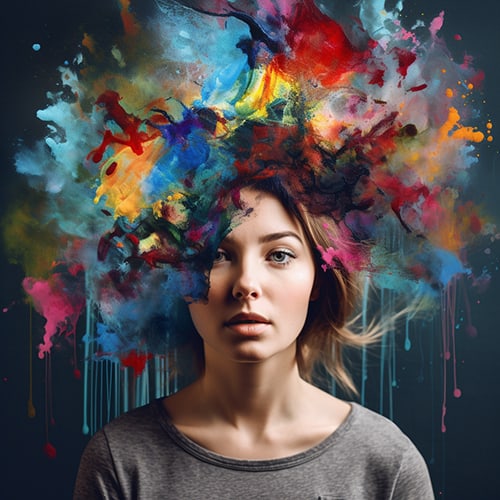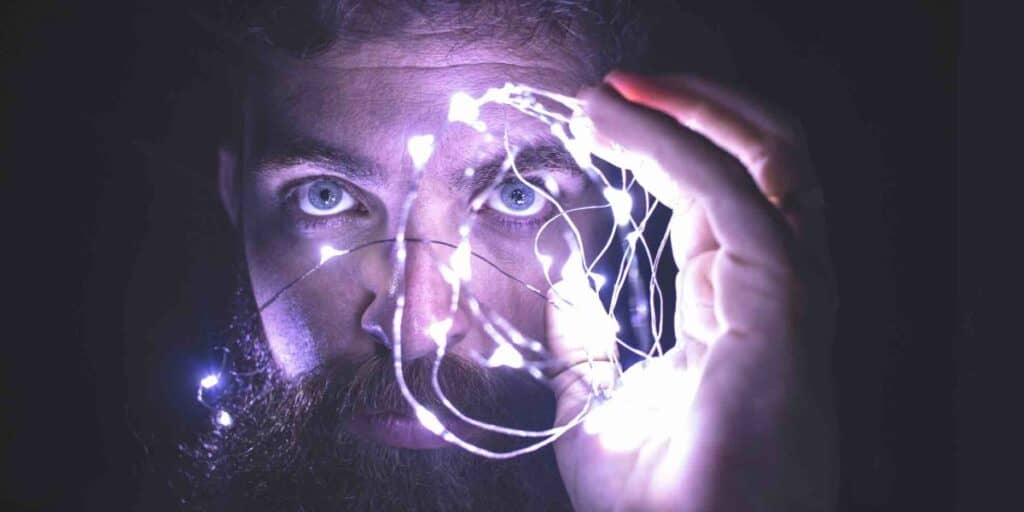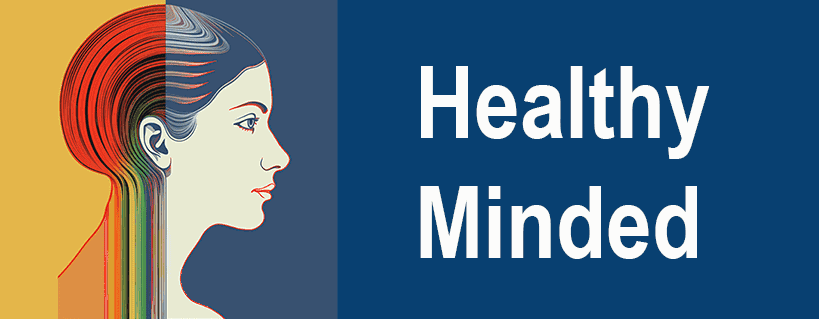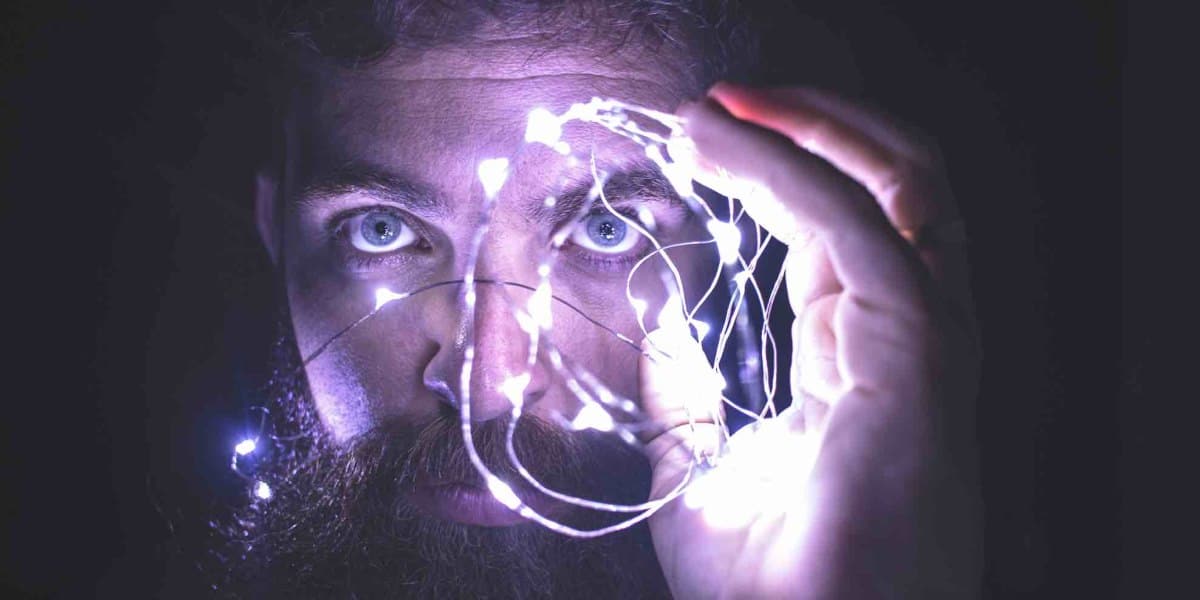
We’ve known for many years that creating art can benefit the brain. When you focus on a creative task, such as drawing or painting, you boost serotonin in the brain, a chemical associated with feelings of wellness. Technological advancements are taking this idea of art being beneficial for the brain to exciting new levels with what’s known as brain painting.
Read on to learn more about brain painting: its uses, benefits, and what it’s all about.
What is brain painting, and how does it work?
Brain painting is the term for being able to create art with your mind! It’s a process that involves wearing a brain-computer interface (BCI), which enables you to draw digital images containing different colors and shapes without using your hands or muscles.
A BCI is an instrument sensor that provides a range of colors, controls, and shapes for users to create artwork on a digital screen.
Users must concentrate on the colors and shapes on the computer screen in front of them. To start drawing them, they must engage with blinking controls on the blank screen. When they’ve selected a color or shape to draw, a blinking light lets them know their selection is confirmed.
This feedback lights up the parietal lobe, a part of the brain responsible for sensory perception, processing your sense of touch, and assembling information gathered from your other senses. A computer algorithm categorizes the stimulus spike in brain activity and saves it on a hard drive.
How did brain paint technology come about?
Computer scientist Marvin Andujar is developing brain paint technology at the University of South Florida. This technology has roots in helping to assist paralyzed people in a locked-in state because of neurodegenerative diseases such as Amyotrophic Lateral Sclerosis (ALS). Even without physical movement, these people can create artwork.
This initial brain painting method developed in the mid-2000s by psychologist Andrea Kübler and Adi Hoesle, an artist and retrogradist, used P300-based BCI, which enables people to paint without using their muscles. The blend of electroencephalography (EEG), visual stimulation, and signal processing algorithms on a monitor detects where the user is paying attention, enabling them to trigger certain commands to the painting software.
Andujar’s method improves the research and technique. It’s a new brain painting method that offers a 2D and virtual reality (VR) version of it. The VR experience enables full immersion in one’s environment while creating art, which can have additional benefits, such as relieving the symptoms of anxiety and depression.
Brain painting uses and benefits for mental health
Brain painting is a beneficial technique for people who suffer from mental health conditions such as attention deficit hyperactivity disorder (ADHD) because it gives them greater control – they can focus on one task without getting distracted. ADHD sometimes causes people to struggle to differentiate between sensory stimuli, which tires out their brains. This can cause them to lack focus or mentally disconnect from their environment.
By encouraging people to focus on doing one thing, brain painting can help them to improve their concentration skills. The process is comparable to activities that enhance one’s mental well-being, such as meditation. It also serves as motivation to take them away from potentially distracting objects in their environment, such as their cell phones or other devices.
Brain painting can also be used to track one’s progress. The longer someone can concentrate when producing mental art, the more they’ve improved their skills of focus and motivation.
Types of brain painting technologies
Brain painting can refer to different terms. Some brain painting technologies involve digital art, whereas others aim to monitor and correct brain waves. Let’s look at some common types of brain painting and what they offer people with mental health conditions.
Brain painting via neurofeedback therapy
Brain painting can be achieved via neurofeedback, a type of biofeedback therapy that checks abnormal brain waves in real time so that you can access data about your brain when doing various tasks.
You can access this type of neurofeedback training by using a computer program connected to an EEG sensor that tracks your brain waves while you’re engaged in different tasks, such as reading or watching a video. When the computer detects abnormal brain waves, it redirects you to a different activity.

Since brain waves have various frequencies, different frequencies are linked to different frequency spectrums, such as feelings. Some frequencies don’t fire optimally, so correcting them can be beneficial. Neurofeedback teaches people with ADHD to produce brainwave patterns linked to concentration and focus.
Two brain waves that ADHD most impacts include theta and beta waves. Usually, people with ADHD have high or low theta waves and high theta and beta rations, so neurofeedback therapy is a treatment used to regulate brainwave frequencies and balance them out to decrease the severity of ADHD symptoms.
BrainPaint software via EEG sensors
BrainPaint software monitors one’s brain waves. How it works is that a healthcare professional will apply EEG sensors to your scalp. A session takes about half an hour, in which you’ll listen to music or watch visuals on a screen.
The software will pick up on music and patterns that cause you to enter a relaxed state and then reproduce them by practicing a state of calm. This trains you to activate areas of the brain that could lack stimulation, and it serves to increase your self-awareness.
A BrainPaint session costs about the same amount as an in-person therapy session. It’s been found that BrainPaint can improve ADHD symptoms in children after 12 sessions.
RoboPix
RoboPix is a robot that can paint action paintings from a user’s thoughts via a BCI. The BCI produces signals related to the user’s thoughts and level of excitement that control the robot’s arm so it paints on a canvas. This could potentially benefit people with ADHD who struggle with concentration because the system has a feedback loop to keep the user engaged after they’ve lost concentration.
The robot produces an artistic representation of the user’s thoughts and excited emotions at the moment of creation. The rotation and intensity of movement will be affected by the person’s individual thoughts and feelings, therefore creating a unique piece of art.
BIC brain painting meditation
Researchers from Shanghai Jiao Tong University and the University of Sydneyhave designed an interactive brain painting and meditation application that could enhance creativity, lower stress, encourage meditation and boost cognitive skills while users learn a new language.
A study of it showed that meditation and brain activation that occurs when painting are the most effective ways of enhancing brain functions such as memory and attention.
This exciting research reveals how brain painting can provide many benefits for people, not just by treating or regulating mental health conditions but by helping people achieve goals such as improving their memory and learning new languages.
Brain Painting for ADHD: Pros and cons
The ability to create digital artwork with your thoughts to improve your focus can help ADHD patients to maintain better concentration in many areas of their life. But what are the pros and cons of this type of technology?
Pros
- Brain painting is a non-invasive treatment.
- It doesn’t involve any medications and could even decrease the need for prescription ADHD drugs.
- It enhances one’s creativity, which has other benefits for the brain, such as increased confidence. In this way, it’s similar to journaling for anxiety or other creative pursuits.
- Brain painting encourages healthy mindfulness. By focusing on the task at hand, which is painting, users can avoid distractions that derail their focus.
- It’s a personalized treatment system that learns from one’s unique brain activity.
- It allows users to track their progress based on how they can remain focused on the creative task for longer periods of time than they could previously manage.
Cons
- The technology for brain painting is expensive, especially if it requires sensors or virtual reality devices.
- The availability of brain painting could be limited in some regions. Treatment isn’t necessarily affordable or convenient, depending on factors such as regulation, demand, and funding.
- More research is required to test the effectiveness of brain painting in treating conditions such as ADHD.
- It’s being used to improve attention span in people with ADHD. Brain painting hasn’t been used to test its effects on other ADHD symptoms, such as hyperactivity.
Conclusion
Brain painting is a way to create digital art with your mind via a brain-computer interface, and it’s a useful process that can improve your focus and concentration, which makes it a valuable way of monitoring and regulating ADHD symptoms. But it has many other potential benefits, such as encouraging creative expression and healthy brain functions, even if users don’t have a mental health condition.

